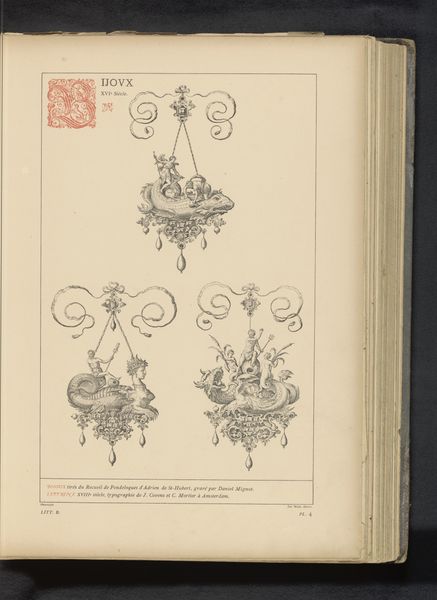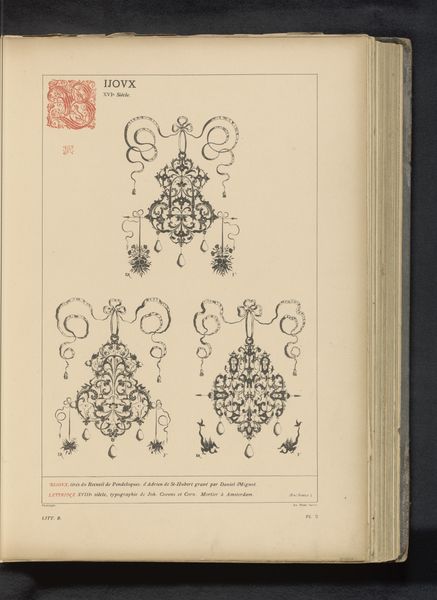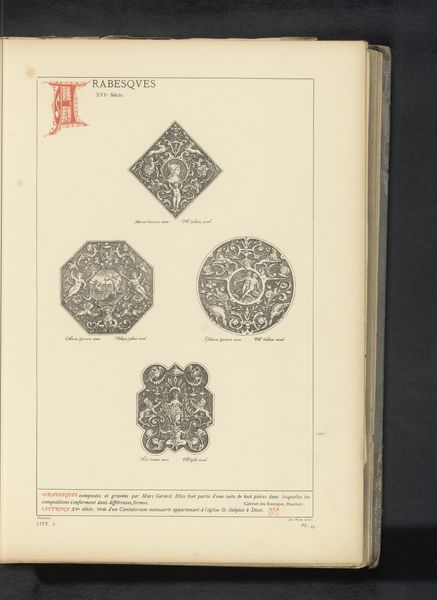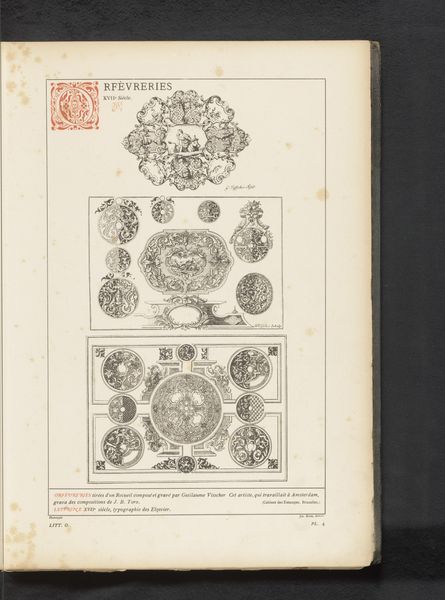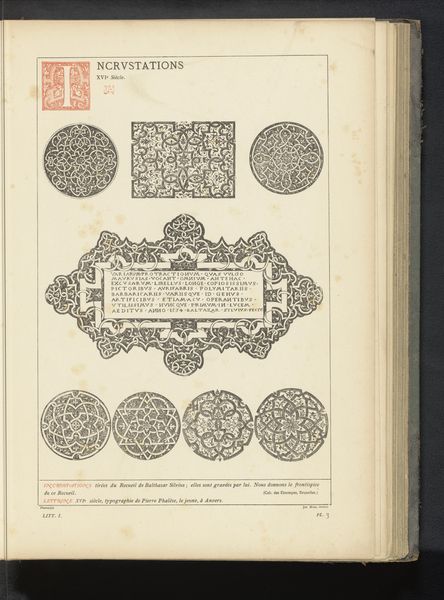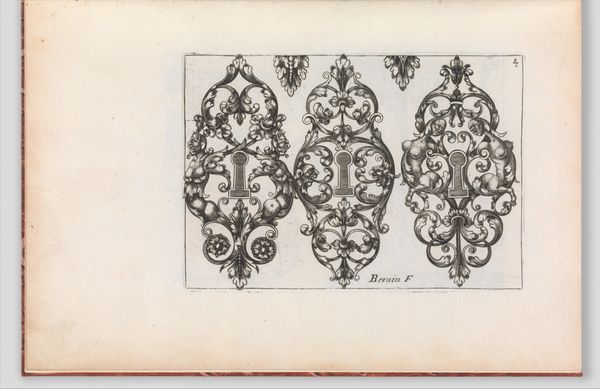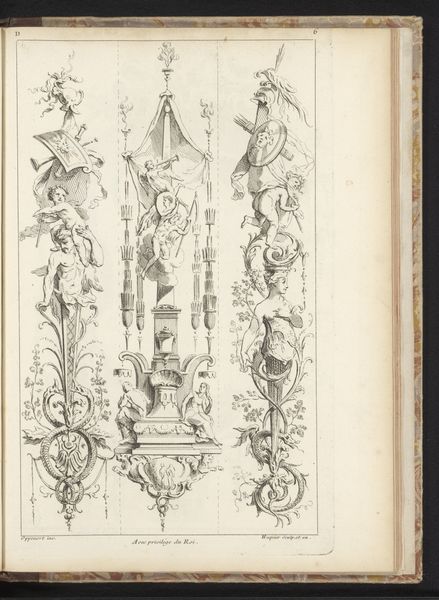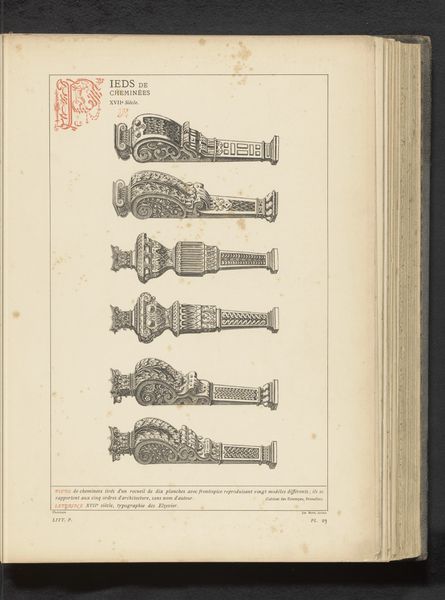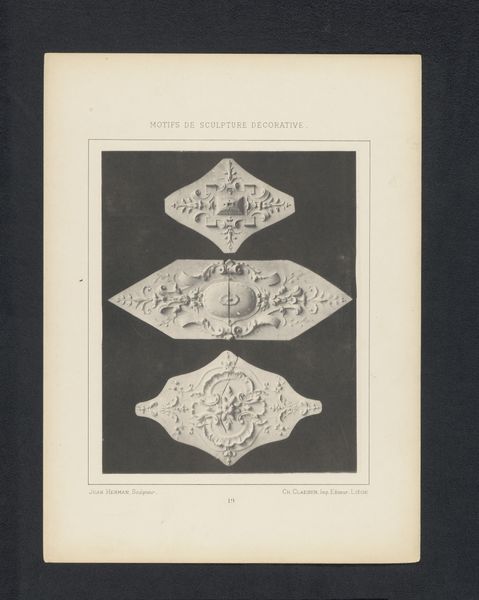
Reproductie van vier prenten met juwelen uit de collectie van Hans Collaert before 1880
0:00
0:00
drawing, ornament, print, engraving
#
drawing
#
ornament
# print
#
figuration
#
11_renaissance
#
geometric
#
italian-renaissance
#
engraving
Dimensions: height 342 mm, width 230 mm
Copyright: Rijks Museum: Open Domain
Curator: Here we have a reproduction of four prints showcasing jewelry designs. It's attributed to Hans Collaert, dating back to sometime before 1880. The images themselves appear to originate from the 16th or 17th century. Editor: Intricate! The sheer detail is captivating. I'm immediately drawn to the contrasting weight of the line work and how the shapes manage to feel both opulent and meticulously planned. You can see that making these was really labor intensive. Curator: Precisely. These images offer us a window into the cultural significance of jewelry during the Renaissance. It represents wealth, status, and the evolving aesthetic values of the time. Think about how prints like these circulated - offering access to luxury designs for a growing merchant class. Editor: I'm really curious about who made the designs and how that knowledge was transferred to create physical objects. Like what kind of workshop supported Collaert's original art, or who would ultimately be responsible for shaping the final materials and gems. Did artisans interpret these designs exactly? Or did the production process bring about unforeseen evolutions? Curator: That touches on a vital point. While these prints appear decorative, they really underscore a changing dynamic of artistic patronage, and artistic license. Printmaking democratized access to design ideas, so how did those with power - and money - react and adapt? Editor: It's about consumption then, right? These detailed drawings served almost as catalogs to attract certain people. Now I wonder how it would change design processes to start off with the constraints and possibilities of metal, gemstones and jewelry-making equipment in mind? Instead of presenting an almost idealized image. Curator: Exactly, and to take that idea further, how did those in power attempt to reinforce hierarchies through increasingly complex and visually overwhelming pieces that tested those material limitations, reinforcing class divisions and their right to access these resources? Editor: Well, this has been quite a revealing look, beyond surface value! It’s so cool how these kinds of ornate drawings point toward interesting avenues for deeper critical interrogation of economics, production and status. Curator: Agreed. This particular arrangement shows us that these reproductions speak volumes about artistry, consumerism, class, and design across historical moments.
Comments
No comments
Be the first to comment and join the conversation on the ultimate creative platform.
